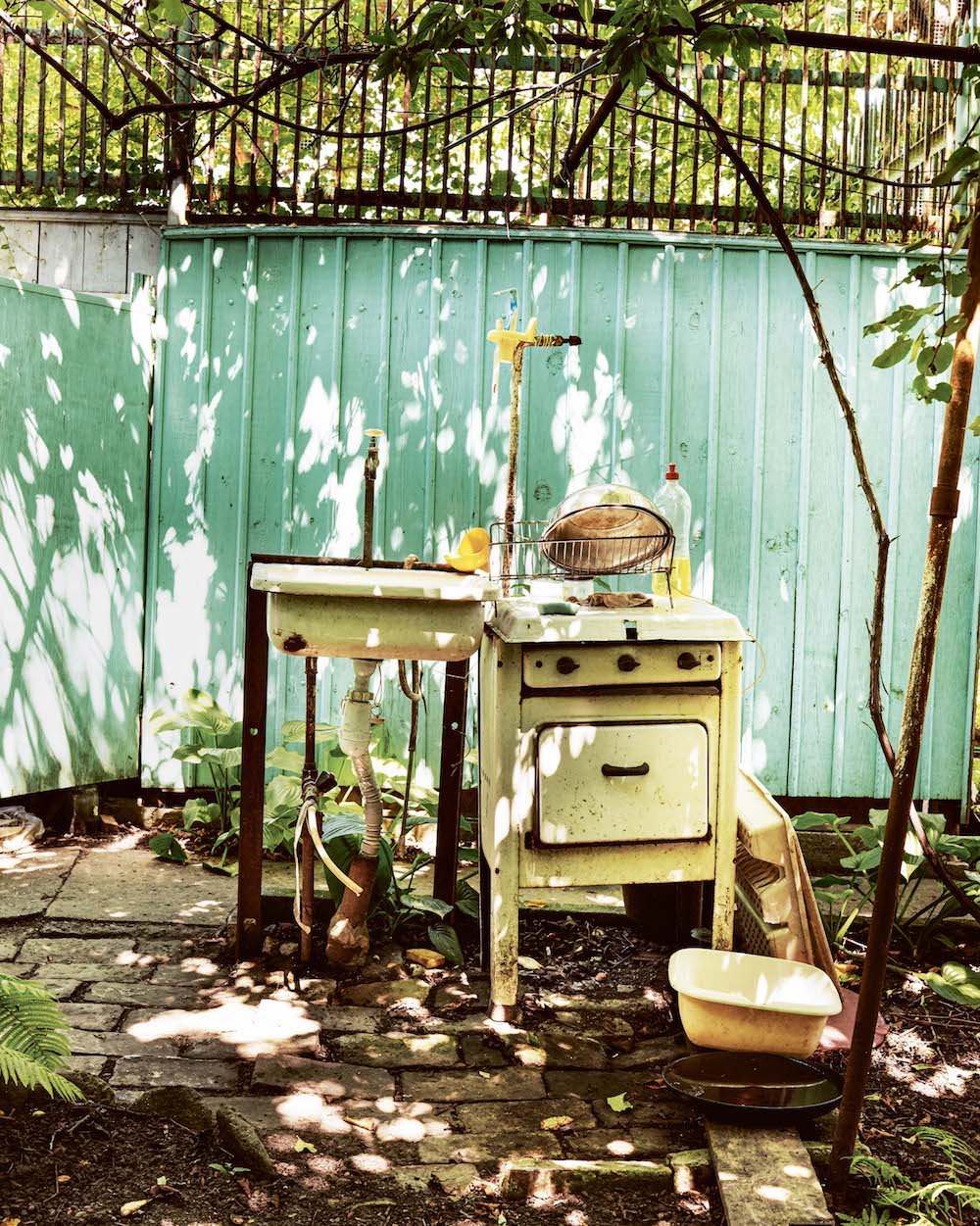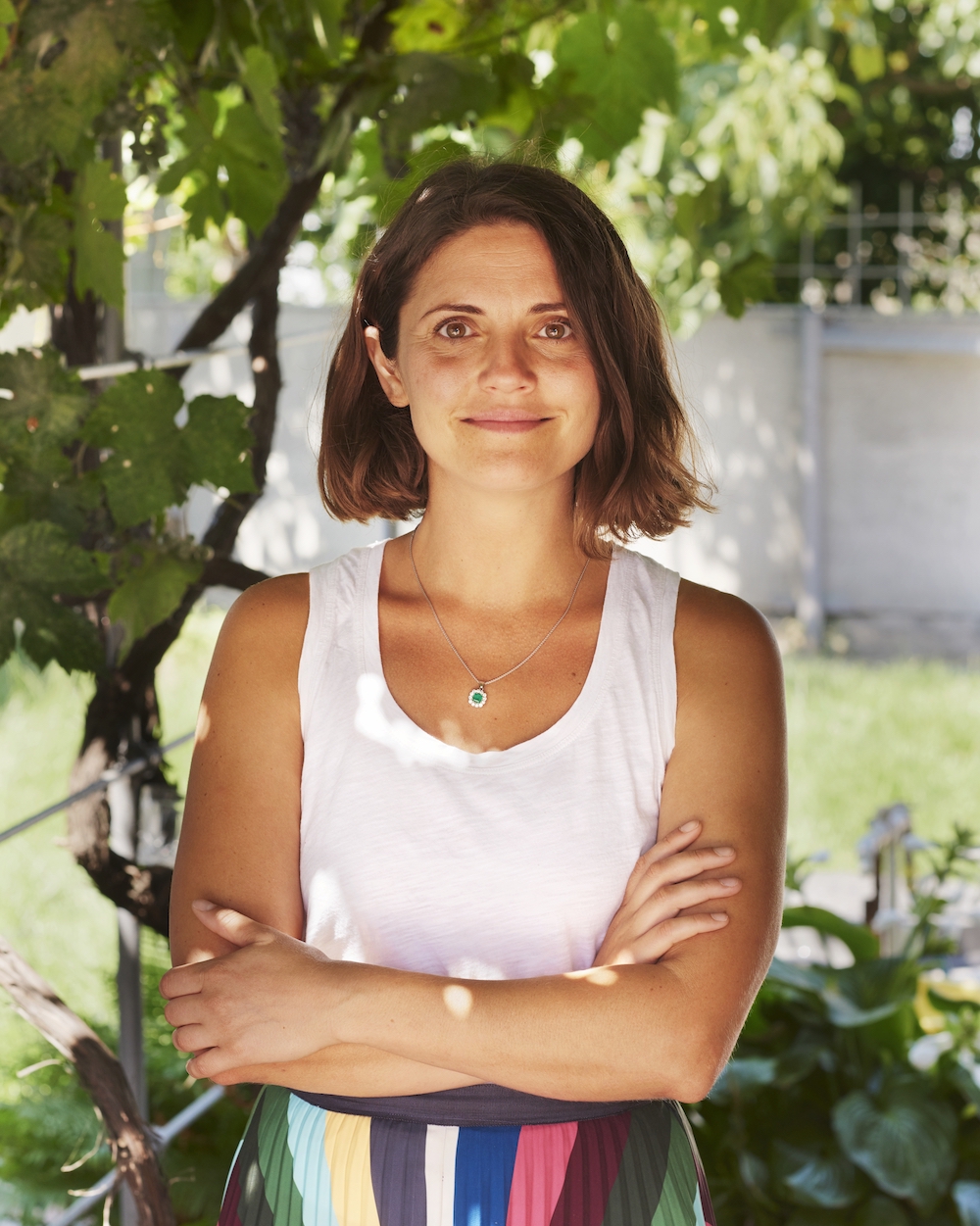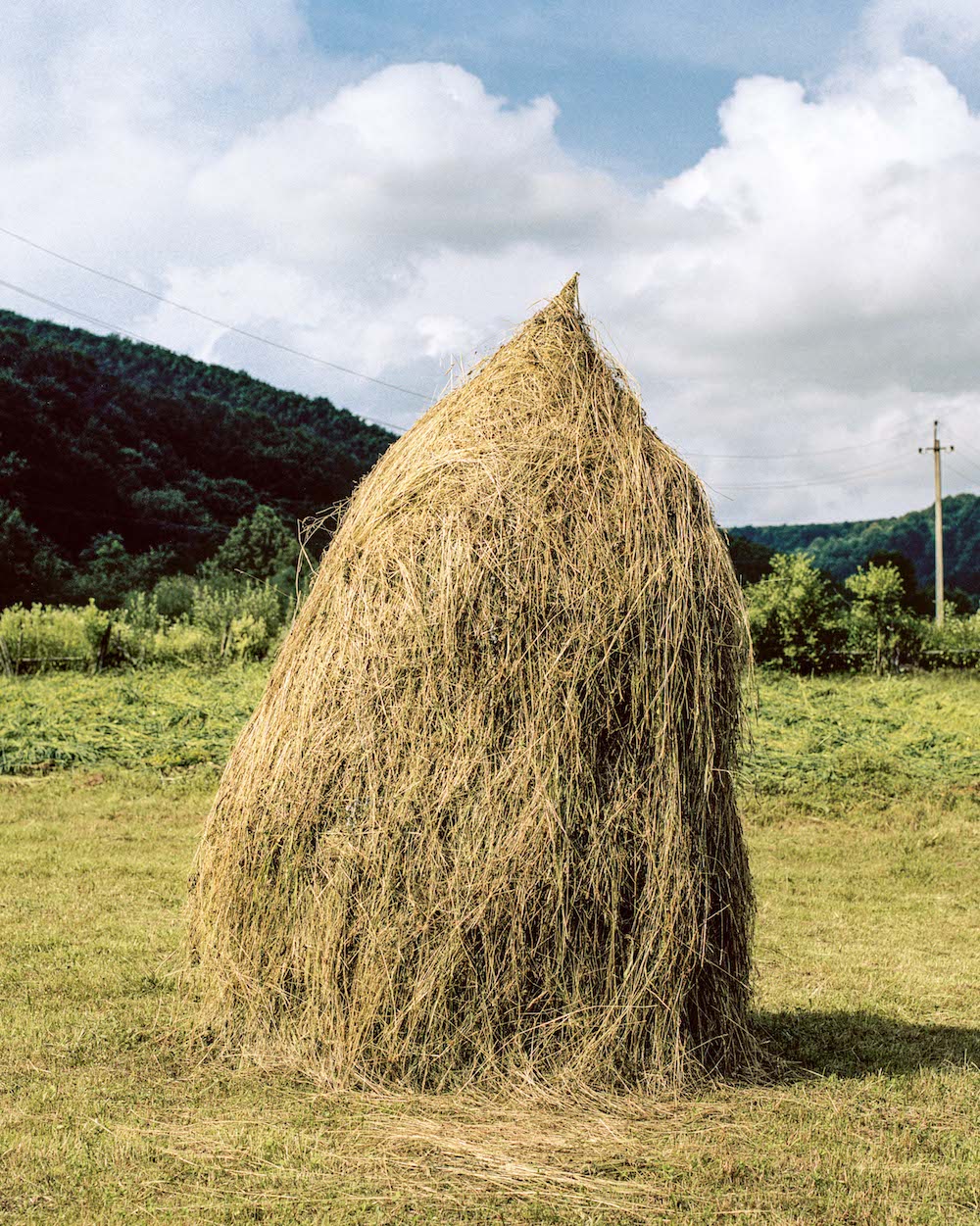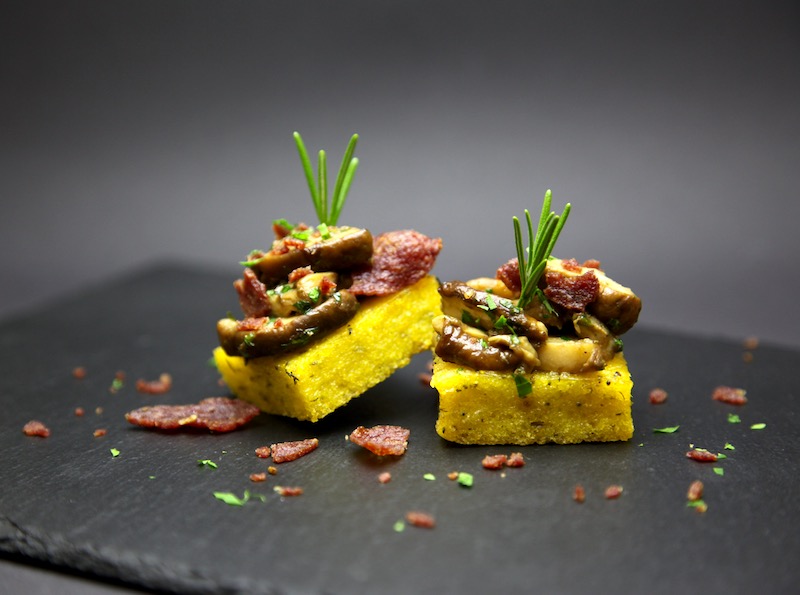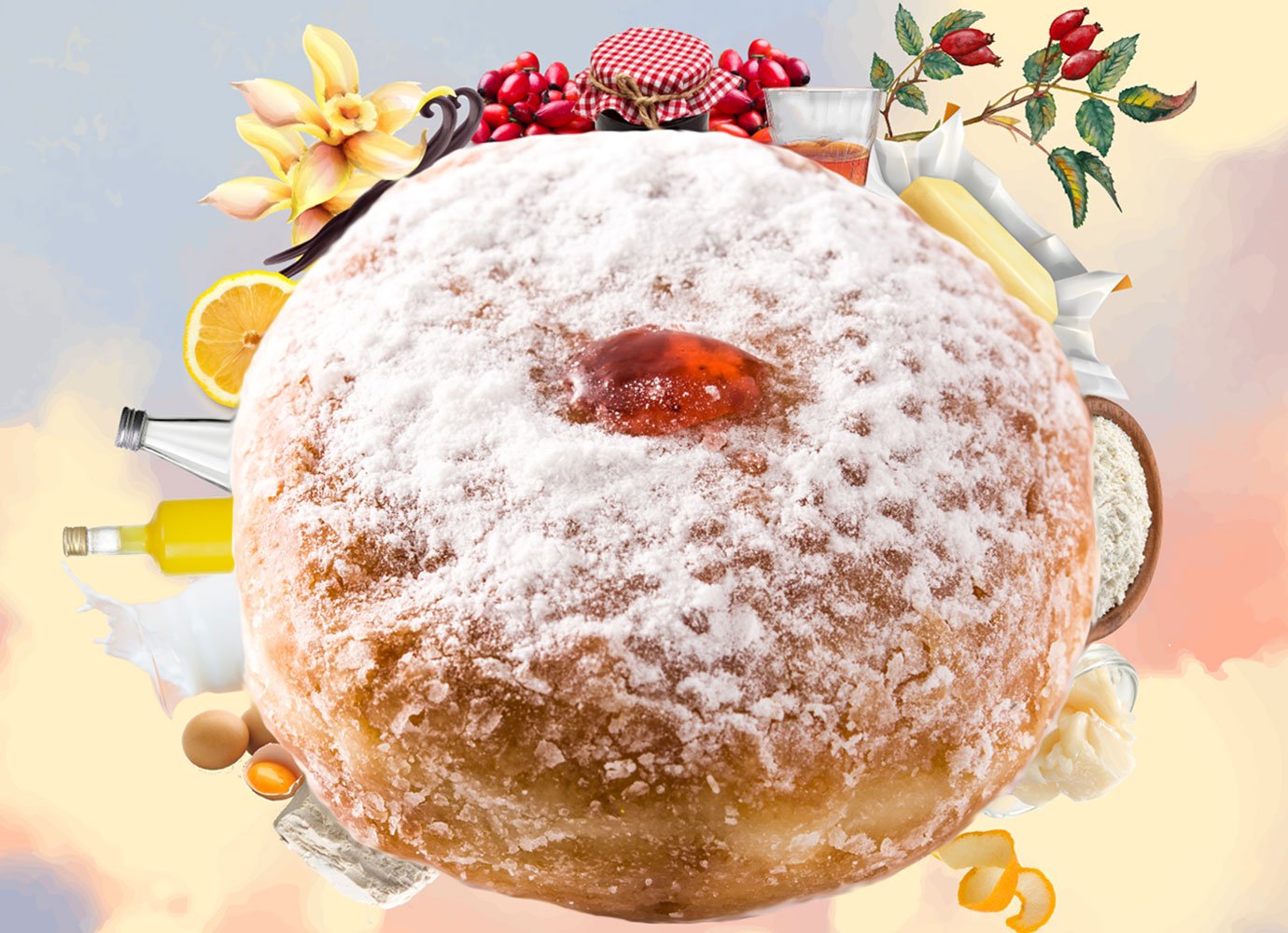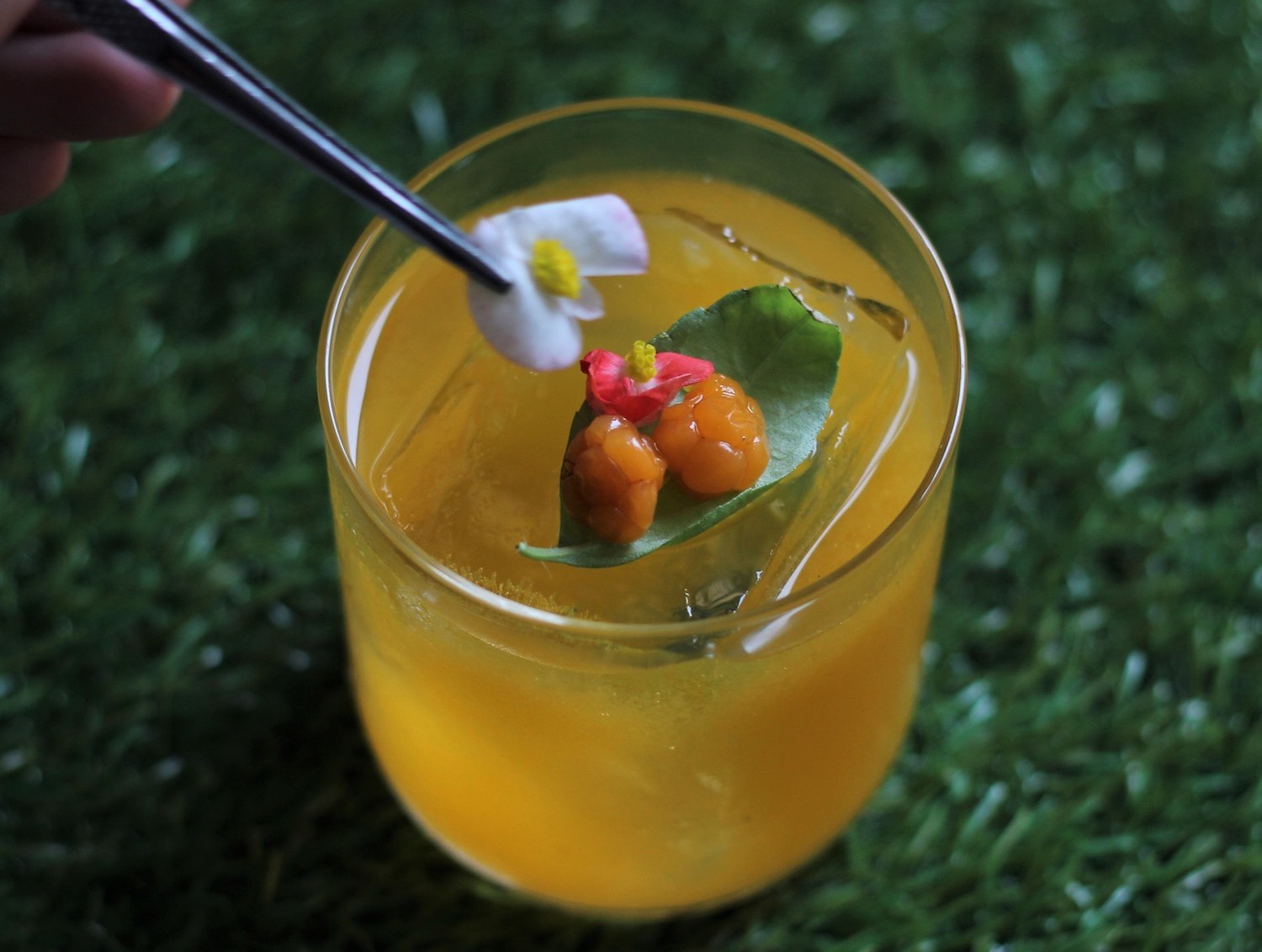Summer kitchen with Olia Hercules: 3 Ukrainian recipes that embrace the great outdoors
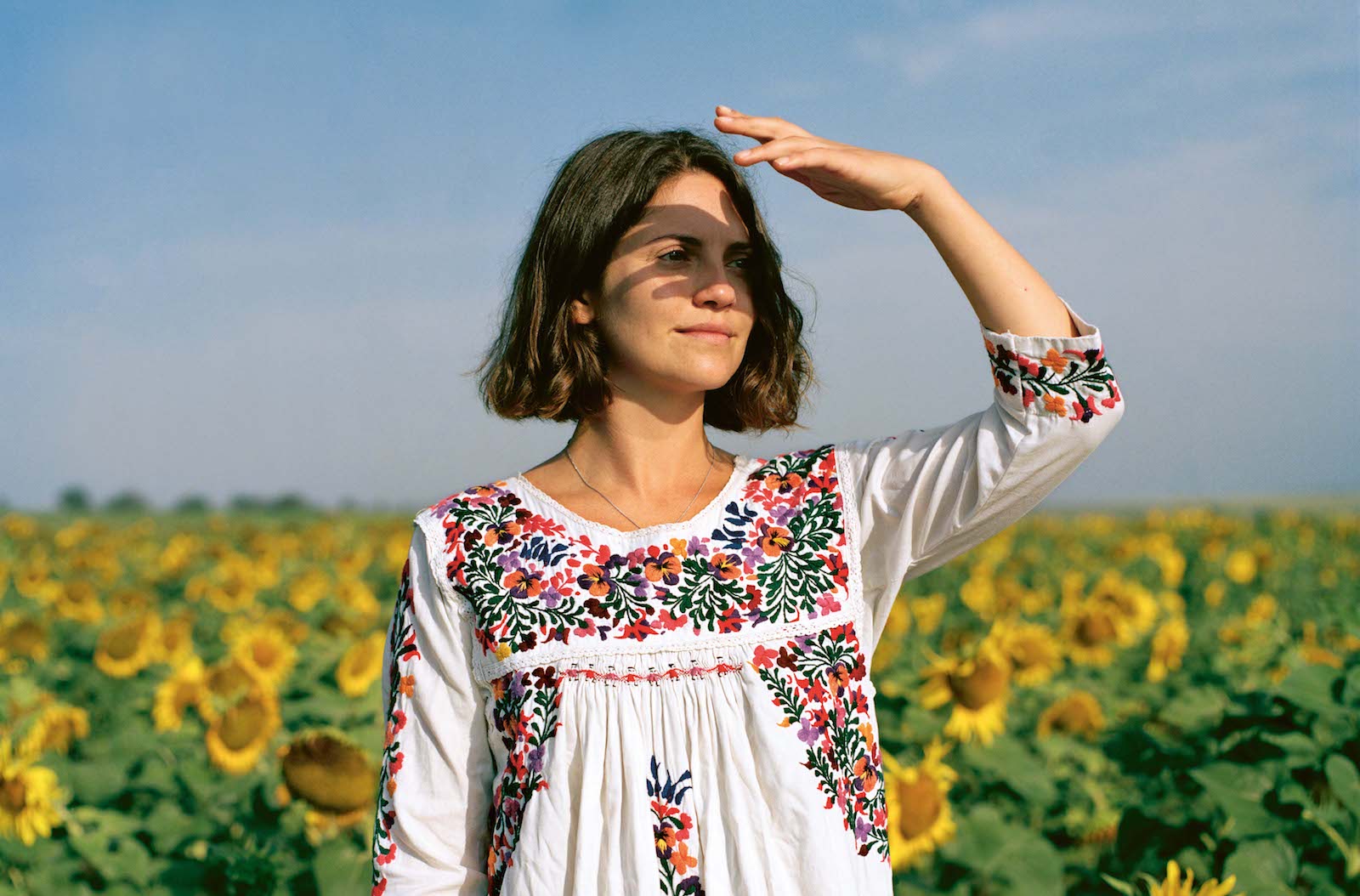
London-based Ukrainian chef Olia Hercules is renowned for celebrating the many culinary traditions and diverse tastes of Eastern Europe. In her new cookbook Summer Kitchen, out now with Bloomsbury, she revisits the Ukrainian tradition of seasonal open-air kitchens and celebrates the country’s culinary diversity.
I grew up in the south of Ukraine, in a small town called Kakhovka. Apart from having a regular kitchen indoors, we had something else: a separate little house, nothing glamorous — just a one-room brick structure, which we called the litnya kuhnia, “summer kitchen”. It was situated in our courtyard, close to the place where we grew our fruit and vegetables, and was a natural and unremarkable part of our lives.
I live in London now, with hardly any space for a shed, let alone a summer kitchen, but the memory of having a separate cooking-workshop space makes me feel as though back then we had more luxury than we thought. It was only when I very casually mentioned summer kitchens to my friends here that I realised they were actually a bit of a phenomenon, quite idiosyncratic and magical. I was suddenly burning to find out more about this tradition. Little did I know that the summer kitchen’s story would turn out to be even more interesting than I could have imagined.
Summer kitchens were practical. In summer, the heat could be intense and there was rarely any air conditioning, often not even extractor fans. To have a separate place where frying, cooking and preserving could be done was very handy. Apart from everyday and festive cooking, summer kitchens were where all the fermenting, pickling and preserving happened, on an almost industrial scale, come September. Pick your fruit and vegetables by the bucketful, carry them into the summer kitchen and start the mammoth pickling operation, leaving the doors and windows wide open.
Today, more often than not, people do have air conditioning and extractor fans, and some are using their summer kitchens as dumping grounds for old tat and suitcases, or are simply dismantling them.
Whatever the future holds for summer kitchens, I doubt many will survive much longer, although I have met some dedicated young people who are interested in resurrecting their summer kitchens and masonry ovens. And, at least on paper, I am determined to give these practical and dreamy places — and the food traditions and cherished recipes created in them — the attention they deserve.
Nettle, sorrel and wild garlic soup
Serves 6
Towards the end of April and during May, before much grew in people’s kitchen gardens, the fields and forests of Ukraine would already be filled with young nettles and wild sorrel. Foraging wasn’t so uncommon in the past and is now being rediscovered, in Ukraine and elsewhere.
This nettle, sorrel and wild garlic soup, which is sometimes called green borsch, can also be made with chicken stock and served with chopped boiled eggs, but usually I just add a spoonful of crème fraîche to my bowl and eat it with a chunk of crusty bread. You don’t have to sauté the vegetables before adding the water, but if you do, you will draw out more sweetness from them and the soup will be perfectly balanced: sour, sweet and slightly hot from the wild garlic and black pepper. If there are any leftovers, you can blitz them to make a puréed soup (which freezes very well) and then serve it with some crumbled blue cheese on top.
Image: Joe Woodhouse
2 tbsp rapeseed or olive oil 1 onion, cut into 1cm dice
2 carrots, scrubbed and cut into 1cm dice
1 small celeriac, peeled and cut into 1cm dice
3 celery sticks, cut into 1cm dice
1 leek, white part only, cut into 1cm dice
3 big garlic cloves, peeled 1 bay leaf
6 baby potatoes
100g sorrel, sliced
75g young nettle tips (the top few leaves on each stem)
50g wild garlic, sliced (flowers kept for garnish)
3 spring onions, thinly sliced Handful of chopped dill Handful of chopped parsley Sea salt and black pepper
Crème fraîche, to finish — optional
Pour the oil into your favourite soup-making pot — I use a cast-iron casserole — and put it over a medium-high heat. Once the oil is hot and sizzling, add the onion, carrots, celeriac, celery and leek. Sauté for about 5 minutes, stirring from time to time: you want them to become caramelised in parts, but not scorched. (If the pan feels too crowded, you can fry the vegetables in batches.) Now add the garlic and cook for about 2 minutes, still stirring, until fragrant and starting to get a little colour.
Pour in 2.5 litres of cold water and add the bay leaf. Season lightly with salt and bring to the boil, then turn down to a simmer and cook for about 40 minutes with the lid half on.
Add the whole potatoes and cook for 10 minutes or until they are soft. Finally, add the sorrel, nettles and wild garlic and switch off the heat. Taste the soup and add more salt if needed.
Place a potato in each soup bowl and lightly crush it with a spoon. Ladle over the broth and then sprinkle with the wild garlic flowers, spring onions and herbs to serve. Finish with a dollop of crème fraîche, if you like, and a good grinding of pepper.
Braised cabbage of Sean’s dreams
Serves 6
For a long time I had a real, deep-rooted complex about Ukraine’s cabbage and potato dishes, all too often the only things people in the West associated with Eastern European cooking. But now I embrace them all — none more so than a delicious braised cabbage. This is my mother’s recipe, and it is a pretty common one. When my Cornish friend Sean cooked it, the next day he texted me these beautiful words: “I cannot convey how much I loved the cabbage last night, so amazing. It goes so far to disprove the stereotype. I had dreams about it.” Needless to say, that made my heart sing!
Serve this as an accompaniment to poultry or sausages, or on its own with some good bread.
Image: Joe Woodhouse
1 small white cabbage
2 tbsp rapeseed oil
2 onions, thickly sliced
1 1⁄2 tsp caraway seeds
1 large red pepper, thickly sliced
100ml tomato juice (or use the juices from tinned tomatoes)
200g crème fraîche
1 tbsp chopped parsley Sea salt and black pepper
Slice the cabbage into 1cm wide strips and put it into a bowl. Add 1 teaspoon of salt and use your hands to massage it in well.
Heat the oil in a deep frying pan or shallow, flameproof casserole over a medium-low heat. Add the onions, along with a pinch of salt to help release their juices and stop them from burning. You could also cover the onions with a lid or cartouche (a circle of baking parchment about the same size as your pan) to speed things up a bit. Cook, stirring every so often, until the onions are soft and turning a deep golden colour. Add a splash of water if they seem dry or are starting to catch a bit.
Now add the cabbage and caraway seeds and turn down the heat to low. Cover with a lid and cook for about 20 minutes, or until the cabbage starts softening. If it gets too dry, add a splash of water. Add the red pepper and cook for another 5 minutes.
Gently warm the tomato juice in a small pan, then stir in the crème fraîche and add to the cabbage. Taste the sauce and make sure it is well-seasoned, otherwise the cabbage will be too bland and it will not become the cabbage of your dreams. Cover and braise for another 30–40 minutes — when it is ready, the cabbage should be soft, but not falling apart. Stir through the parsley and serve.
Curd cake with caramelised apples
Serves 8-10
My friend Jan once drunkenly asked me to cook for his dad Anton’s seventieth birthday, which I enthusiastically agreed to (also tipsy). Anton, aka Papa Florek or P Flo, grew up in Derby — his Polish father, Alfredo, had settled there after the war, when he was demobbed from the Carpathian Lancers.
Sernyk, a traditional cheesecake eaten across Poland and Ukraine, was one of Anton’s childhood favourites, something that connected him to his Polish heritage, so I decided that’s what I would make. Struggling to find good-quality cottage cheese the day before, I panicked and bought ricotta, adapting my mum’s original recipe to suit the moister texture of ricotta. Happily, it was a huge success, and this cake is now also one of my son’s favourites. I hope someone will make it for him when he is seventy.
Image: Joe Woodhouse
200g unsalted butter, softened
200g apples, cored and sliced 1 tbsp brown sugar
200g golden caster sugar
3 eggs, separated 1 tsp vanilla extract
500g ricotta or good-quality cottage cheese
120g fine semolina or polenta Pinch of salt
Melt 25g of the butter in a frying pan over a medium heat, add the apples and cook for 2–3 minutes on each side until they start to turn golden. Sprinkle in the brown sugar and cook the apples for another minute on each side, then transfer the caramelised apples to a bowl and let them cool slightly.
Preheat your oven to 200°C/Fan 180°C/Gas Mark 6 and grease a 20cm square or round cake tin with butter. Lay the apples in the base of the cake tin.
If, like me, you left your butter out in the kitchen overnight, but it was so blooming cold it didn’t soften properly, cut the rest of it into small pieces. Whatever state the butter is in, put it into the bowl of an electric mixer fitted with the whisk attachment, along with 150g of the caster sugar, and whisk until it’s looking fairly fluffy. Break the egg yolks with a fork and gradually add them, whisking well, then whisk in the vanilla extract and cheese. Transfer the mixture to another bowl, then fold in the semolina or polenta (the latter will result in a cake with more texture).
Wash and dry your mixer bowl and whisk attachment thoroughly, then put in the egg whites and whisk until they start frothing up. Add the remaining 50g of caster sugar and the salt and keep whisking until you have soft peaks. Now take a large spoonful of the egg white mixture and fold it quite vigorously into the butter and cheese mixture to loosen it up. Add the rest of the egg white mixture and fold in gently. Pour the mixture over the apples in the cake tin and bake for 30 minutes, or until it is a little wobbly, but not liquid. Remember it will set more firmly as it cools.
Leave the cake in its tin to rest and cool down, then slice and serve. Some unsweetened tea with lemon goes perfectly with this.
Get your copy of Summer Kitchen here.
